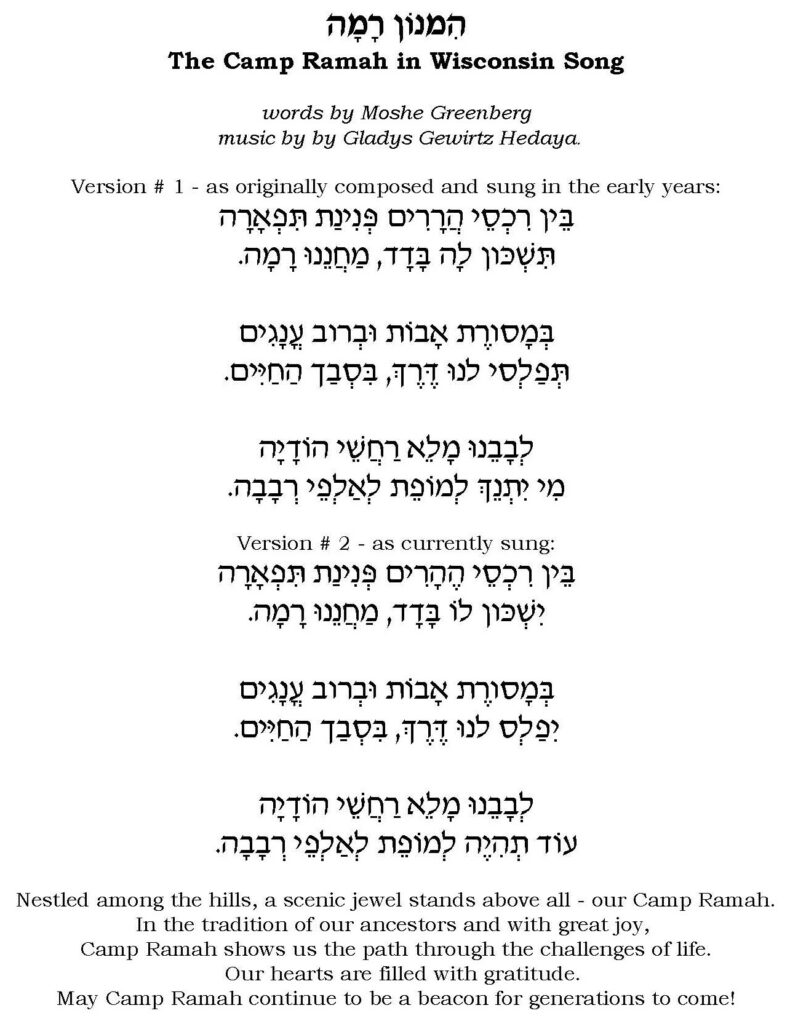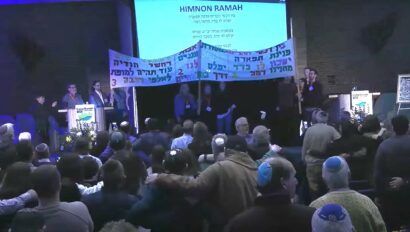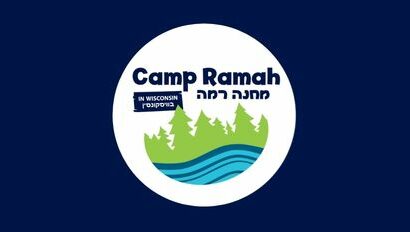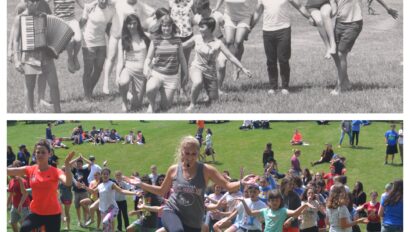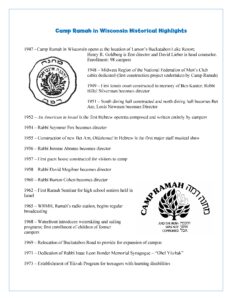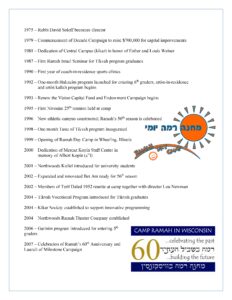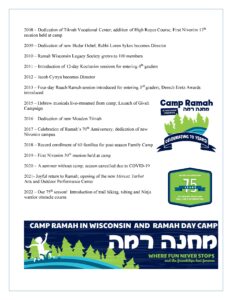
The Study of Text: The “Real” Words to המנון רמה, Himnon Ramah
by alumna Miriam Steinberg
From the Machanenu Ramah newsletter, fall 1995 edition
Jewish education consists, in large part, of the study of text. Part of interpreting a passage is understanding that the textual material has likely changed over hundreds of years. Last fall, the Ramah community was presented with an excellent example of what can happen to a text within a period of just a few years. The text was המנון רמה, the Camp Ramah anthem.
During preparations for the dinner honoring Rabbi David and Emily Soloff, we decided to distribute the words to המנון רמה. The question was, however, which version of the words should be used. Copies of the words from the 1950’s differed from the 1960’s version. And later versions differed from these. Opinions diverged as to: whether the changes were inadvertent or intentional; the reasons the words changed; whether the changes were corrections and improvements or improper alterations. In other words, what were the “real” words to המנון רמה?
Fortunately, through the able assistance of Rabbi Jerry Abrams, Director of Camp Ramah in Wisconsin during 1956 and 1957, we were able to receive the input of the author of the words. Moshe Greenberg was a pioneer camper when Ramah first opened in 1947. A graduate of the Jewish Theological Seminar, Rabbi Greenberg is now a Professor of Bible at Hebrew University. To the best of his memory, the camp anthem was written in 1952, to music composed by Gladys Gewirtz Hedaya.
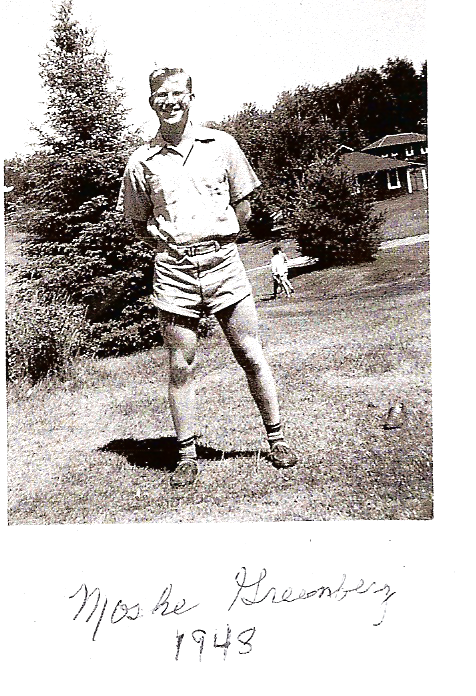
Professor Greenberg reviewed his files, as well as the various renditions of המנון רמה, and provided valuable comments concerning his original intent and imagery. The first, obvious, difference between the 1950’s and 1960’s versions, is that the earlier one treats the word מחנה, camp, as feminine while the later considers the word masculine. The origin of this change is unknown, but was presumably done in order to “correct” a perceived grammatical error. Professor Greenberg tells us that while in most cases the Tanach (Bible) considers מחנה as masculine, he chose to make it feminine in order to correspond with the song’s image of Ramah as a nurturing, maternal, guide. This harmonizes with the song’s reference to the blessing of fertility which was bestowed to Rebecca היי לאלפי רבבה (Genesis 24:40). This feminine treatment of Ramah is linguistically acceptable, and is it also sometimes also used in the Tanach (for example, אם תחנה עלי מחנה, Psalms 27:3).
Secondly, is the third word of the song הררים or ההרים? Both words mean “mountains,” a feature not present in the Northwoods of Wisconsin. But there certainly are hills and crags, an additional use of the word הרר. Professor Greenberg confirms that he used הרר when he wrote the anthem, based on its use in the Tanach as a poetic alternative to הר in the inflective form. It is likely that most listeners were familiar with the word הר but not at all familiar with הרר; thus this change from the original was probably inadvertent.
In commenting upon the revisions of המנון רמה, Professor Greenberg noted that the emotional dynamic of his piece was altered. The verses of the original moved from a view from the distance of the beautiful physical setting (stanza 1), to addressing camp directly, acknowledging all that camp does for us (stanza 2), climaxing in stanza 3 with our grateful, fervent wish for (and not the calm prediction of, in the “corrected” version) future proliferation. He referred to this progression as a ladder of warmth and engagement that does not appear in the revision.
These comments were not based upon Professor Greenberg’s memory of his original intent, but rather his recent interpretations of the language of the two versions. Professor Greenberg concluded that he was gratified that whether or not he originally was aware of what he was doing, the original product was rich in warmth and imagery. We agree.
A few years later alumnus Arthur Elstein visited Professor Greenberg in Jerusalem, and shared this:
In 2003 I visited with esteemed scholar Moshe Greenberg, the author of Himnon Ramah, at Harriet Elazar’s apartment in Jerusalem. I told him that over the years a number of changes had crept into the Ramah hymn. Here are the notes he sent me afterwards, dated July 2003, which explain his reasoning for every place in the text where changes have occurred over the years. When he died, I sent his wife Evelyn a condolence note. In her reply, she said that Jeff Tigay, who had succeeded Moshe in the Bible chair at Penn, used the Ramah hymn in his classes as an example of how errors can creep into a text in a relatively short time, not to speak of centuries of transmission. Interestingly, each of the changes is in the direction of making the Hebrew simpler and less “literary,” yet Moshe had Biblical precedents for the usages he picked.
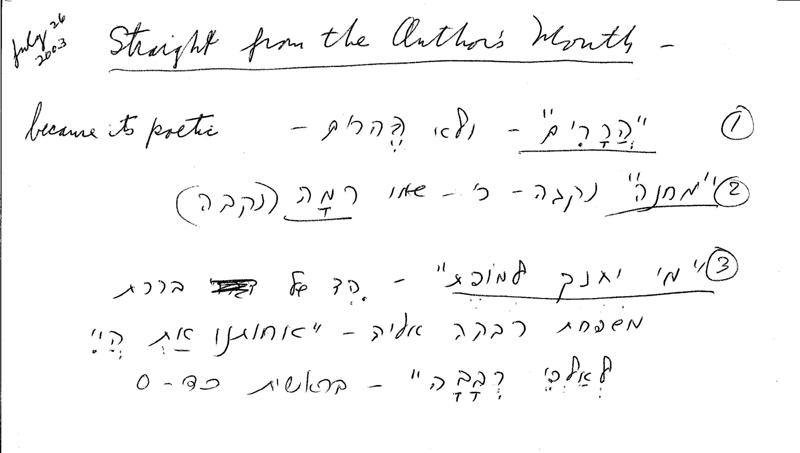
Here is the original version and the version that is sung today:
